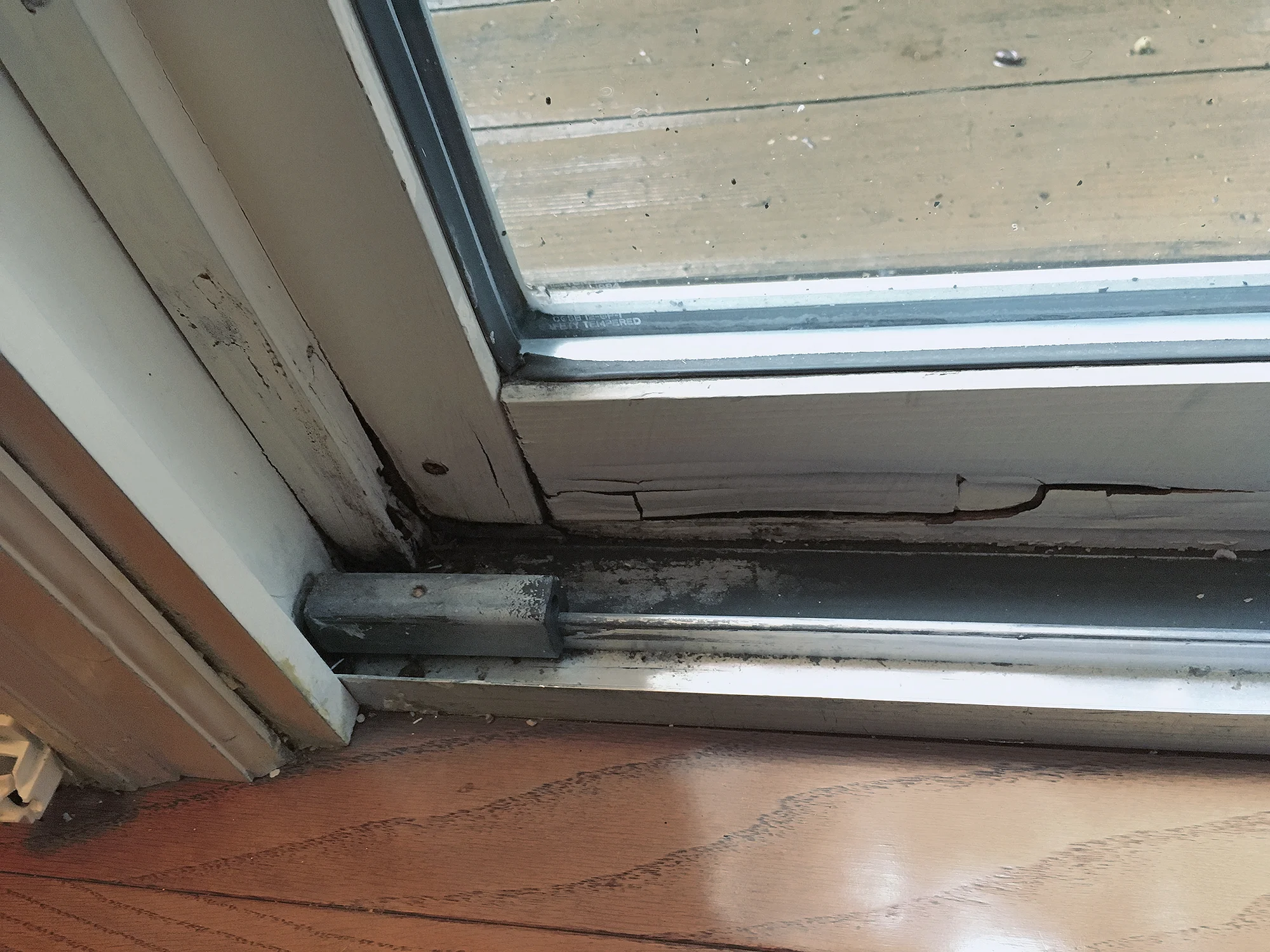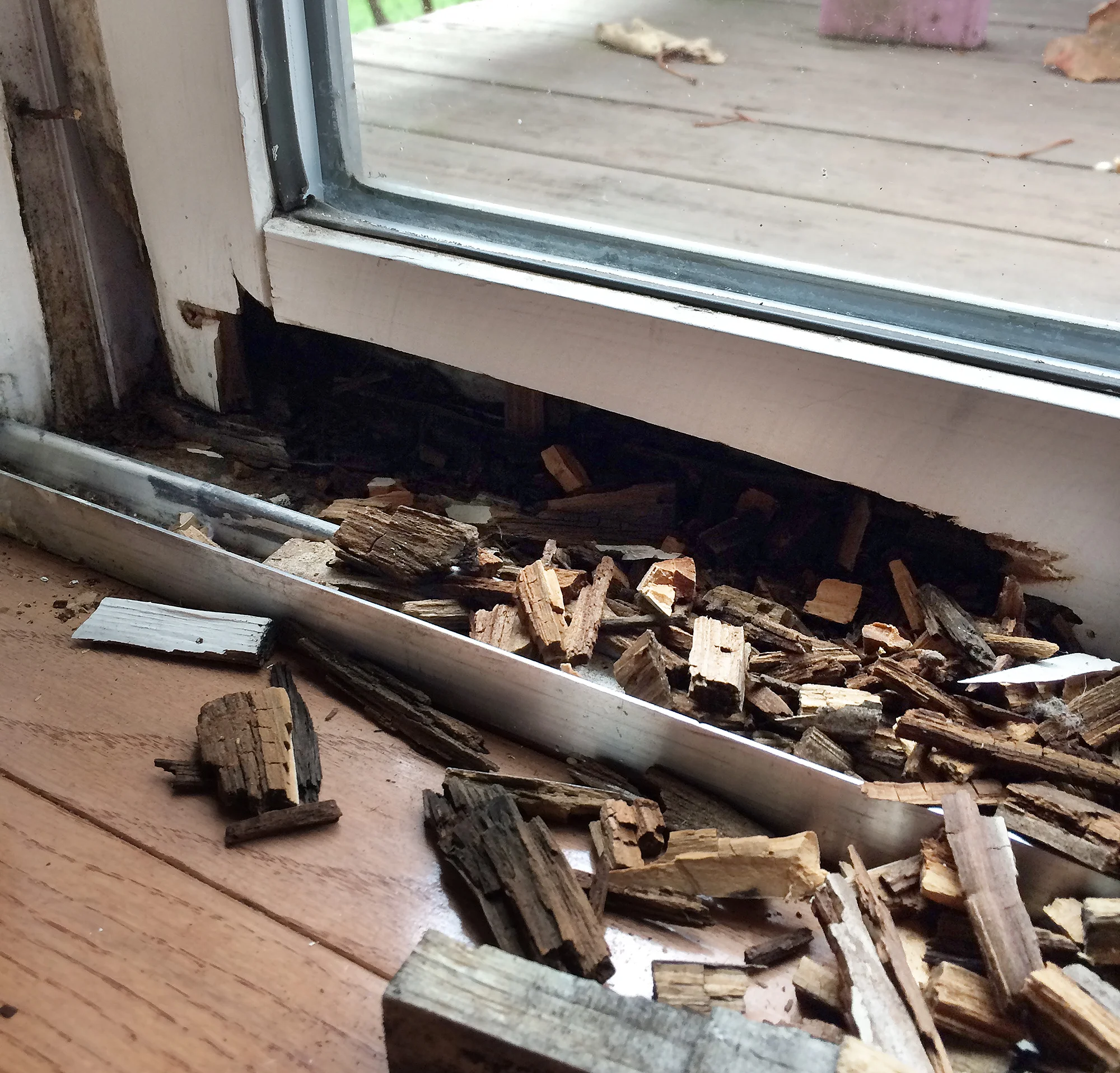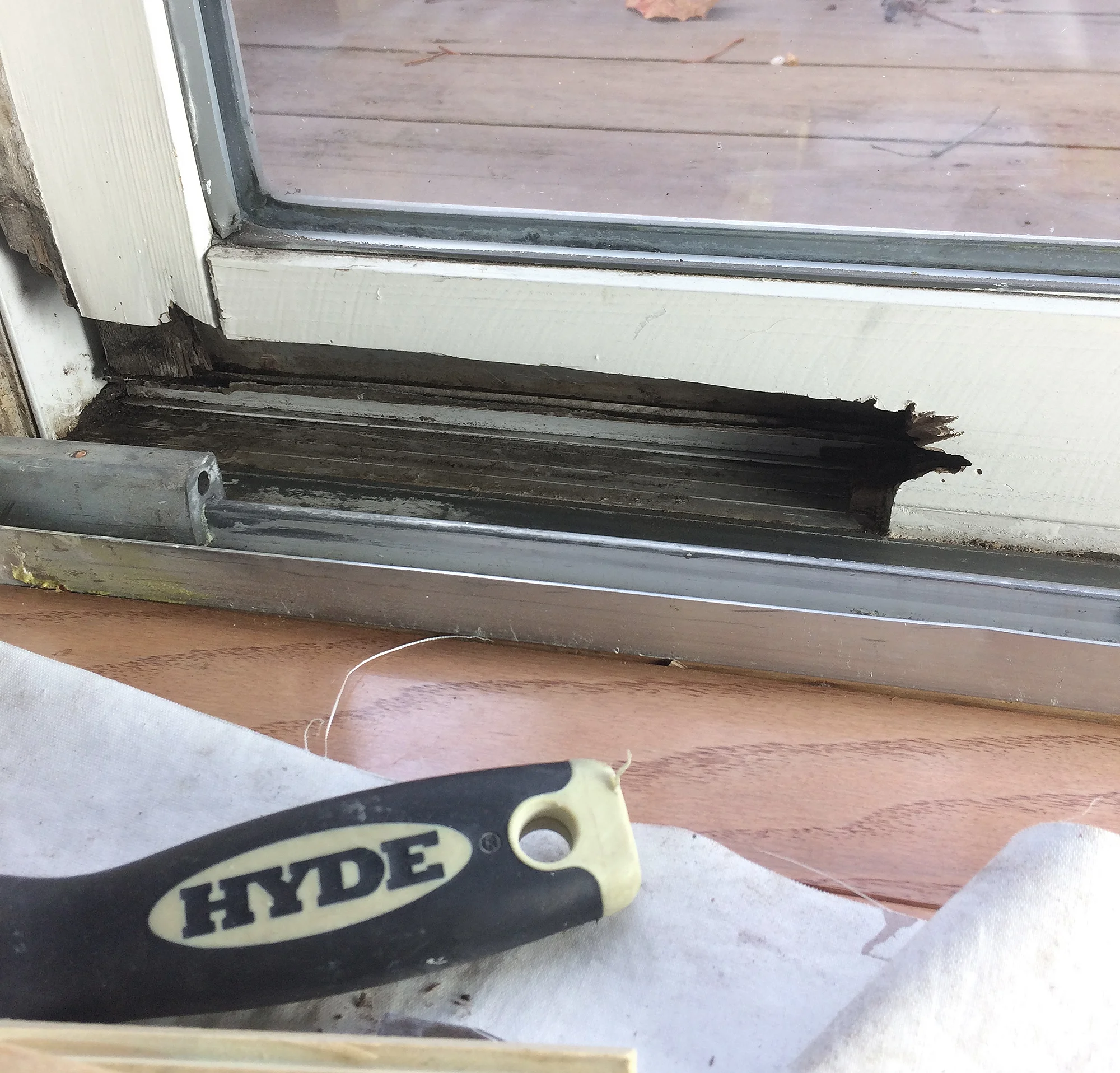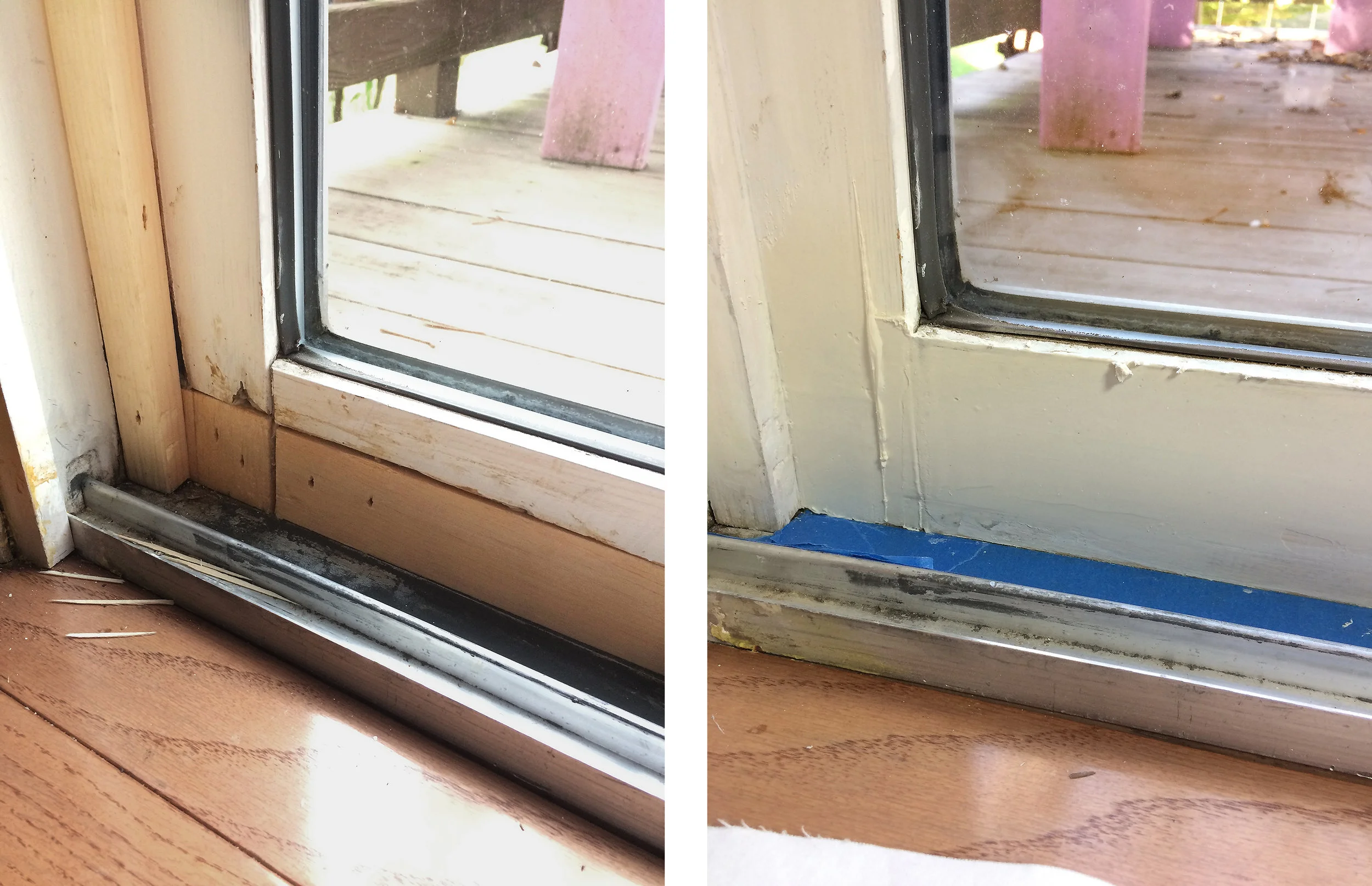Discovering a leaky glass slider is bad enough but when that leak causes the wood slider frame to rot, it can feel pretty overwhelming. Most people usually think of wood rot as an exterior issue but it can occur anywhere wood is exposed to active moisture over time, even indoors. Signs of wood rot include cracking paint, depressions in the surface and a soft, spongy feel. Wait long enough, and you can sometimes even poke your finger right through the wood!
Before attempting to restore, repair or replace the damaged wood, it's critical to identify and remove the source of moisture. Once that's done, the next step is to remove as much of the damaged wood as possible to see what can be salvaged.
In both interior and exterior wood rot, what you see and feel on the outer surface can be deceptive. Our client had no idea how extensive the damage was until we started removing the crumbling wood.
Luckily, our historic preservation and restoration experience allowed us to restore the slider, sparing our client the expense and disruption of replacing it.
With all the rotted wood cleaned out, we are able to apply a wood preservation product that's designed to plasticize the remaining wood. Absorbing deep into the cells of the surrounding wood, it both strengthens the wood and prevents the spread of any residual rot.
We've used these products on our own historic home with impressive results that have withstood the test of time.
From there, we can fill the gap with healthy new wood. Another preservation product that's actually stronger than wood fills the gaps and provides a clean, smooth finish.
A little sanding and shaping, followed by a coat of primer and 2 coats of paint and you'd never know there had ever been a problem!






